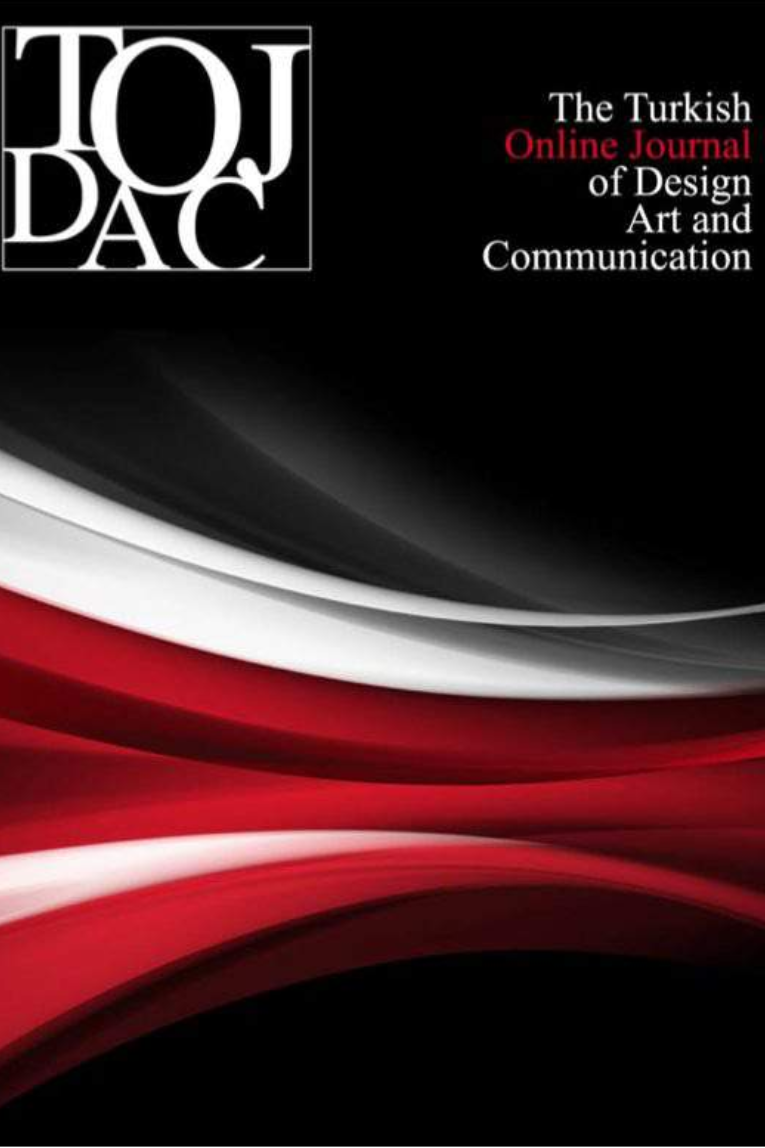AUGMENTED REALITY AS A MEDIUM OF GAMIFICATION OF CONSUMPTION IN THE CONTEXT OF GLOBAL VILLAGE
New Media, Augmented, Consumption, Virtual Environment
___
- Akyazı, Ayşenur. (2017). “Social Media As A New Platform In Corporate Communicatiıon: A Comparative Analysis Of Public And Foundation Universities In Istanbul”, Researches on Science and Art in 21st Century Turkey, Gece Publishing, Ed: Hasan Arapgirlioglu, Atilla Atık, Rubert L. Williott, Edward Turgeon, 1485-1496. Baldini, Massimo. (2000). “İletişim Tarihi”, Çev: Gül Batus, İstanbul, Avcıol Basımevi. Baudrillard, Jean. (2005). “Simülakrlar ve Simülasyon”, Ankara, Doğu Batı Yayınları. Chayko, Mary. (2018). “Süperbağ(lantı)lı: İnternet, Dijital Medya & Tekno-Sosyal Hayat” (Çevirmenler: Berkan Bayındır, Deniz Yengin ve tamer Bayrak) İstanbul: Der Yayınları. Fiske, John. (2014). “İletişim Çalışmalarına Giriş” (Çev: Süleyman İrvan). Ankara: Pharmakon Yayınevi. Güngör, Nazife. (2011). “İletişim, Kuram ve Yaklaşımlar”, Ankara: Siyasal Kitabevi. Karadağ, Gökmen Hakan. (2017a). “Reporting and Interviewing Styles of Professional and Citizen Reporters on Periscope”, Communication and Technology Congress-CTC2017, 22-23 November 2017, İstanbul Aydın University, 88-104. DOI: 10.7456/ctc_2017_07. Karadağ, Gökmen Hakan. (2017b). “What Does Periscope Offer To Professional And Citizen Reporters? A Sample Study From Turkey”, The Turkish Online Journal of Design, Art and Communication–TOJDAC, 7(4), 709-727. DOI: 10.7456/10704100/016. King, Brett. (2016). “Augmented”, MediaCat, İstanbul. Laughey, Dan. (2007). “Key Themes in Media Theory”, New York: Open University Press. Lister, Martin., Dovey, Jon., ve Diğerleri. (2009). “New Media: A Critical Introduction”, London: Routledge. Lyon, David. (2006). “Günlük Hayatı Kontrol Etmek: Gözetlenen Toplum”, İstanbul, Kalkedon Yayınları. Lyon, David. (1998). “The Information Society: Issues and Illisions”, Malden, Polity Press. Manovich, Lev. (2001). “The Language of New Media”, Cambridge,The MIT Press. Mcluhan, Marshall. (1964). “Understanding Media”, NY, Mcgrawhill. Ortaç, F. Rıfat & Akçay, Deniz. “Taxation of Social Media Advertisements”, Marmara Üniversitesi Öneri Dergisi, Cilt 12 Sayı 45, Ocak 2016, ISSN: 1300-0845, ss. 175-185. (DOI: 10.14783/od.v12i45.1000020009) Scoble, Robert. & Israel, Shel. (2017). “The Fourth Transformation”, US, Patrick Brewster. Turkle, S. (2011). Alone Together. New York: Basic Books. Uçak, Olcay. (2015). “Yeni Medyanın Yazılı ve Görsel İletilerde Kullandığı Gerçek Üstü Kodlar İle Oyun Gerçek Kavramlarındaki Anlam Dönüşümü”, 1. Ulusal Medya ve Haber Sempozyumu 2015, 21-23 Ekim 2015, İstanbul Aydın Üniversitesi, 97-118. Webster, Frank. (2006). “Theories of The Information Society”, New York, Routledge. Yengin, Deniz. (2014). “Yeni Medya ve Dokunmatik Toplum”, Derin Yayınları, İstanbul. Yengin, Deniz. (2015). “Yeni Medyanın Olanakları: Semantik Web”, The Turkish Online Journal of Design, Art and Communication–TOJDAC, 5(1), 44-53. DOI: 10.7456/10501100/004. Yengin, Deniz. (2017). “İletişim Çalışmalarında Araştırma Yöntemleri ve Uygulamaları”, Der Yayınları, İstanbul. Yengin, Deniz & Bayrak, Tamer (2018). “Sanal Gerçeklik”, Der Yayınları, İstanbul. Yengin, Deniz. (2017). “Virtual Reality as Technology”, Communication and Technology Congress-CTC2017, 22-23 November 2017, İstanbul Aydın University, 57-68. DOI: 10.7456/ctc_2017_05. Yengin, Deniz & Bayrak, Tamer (2017). “Public Opinion In Social Media”, The Turkish Online Journal of Design, Art and Communication–TOJDAC, 7(2), 376-386. DOI: 10.7456/10702100/019. Yengin, Deniz & Kınay, Ömür (2016). “Transformation of Leisure Time in New Media: Binge Watch”, The Turkish Online Journal of Design, Art and Communication–TOJDAC, 6(4), 351-379. DOI: 10.7456/10604100/001.
- Başlangıç: 2011
- Yayıncı: Deniz YENGİN
ULUSLARARASI TOJDAC DERGİSİNİN BİBLİYOMETRİK ANALİZİ
ERASMUS PROGRAMI’NIN TASARIM ÖĞRENCİLERİNİN YAŞAM VE EĞİTİMLERİNE KATKISI
THE FORM ANALYSIS OF “SKY” COMPOSED FOR SIX-HANDS PIANO
Şirin AKBULUT DEMİRCİ, Berkant GENÇKAL
PÜRÜZSÜZ YÜZEYLER: KÖKEN TEMSİLİYETİ OLARAK VESİKALIK FOTOĞRAFIN SÖYLEMİ
TASARIM EĞİTİMİNDE ALTERNATİF MEKÂN OLARAK SOSYAL MEDYA
Büşra GÜRDAĞ, Kübra Kayaduran AKKAVAK, Gülçin Cankız ELİBOL
İMAJ VE KURUMSAL İMAJ BAĞLAMINDA KENT İMAJI
Hicran Özlem ILGIN, İrfan ERTEKİN, Didem ATAMAN YENGİN
THE COVERAGE OF EU-TURKEY REFUGEE DEAL IN TURKISH ONLINE PRESS
KAMUSAL BİR DEĞER OLARAK HABER VE İNTERNET KAYNAKLI SORUNLAR: KUZEY KIBRIS ÖRNEĞİ
KIBRIS ADASI ORTA MESARYA OVASI GELENEKSEL KONUT MİMARİSİNDE TERMAL KONFOR
GÜNEYDOĞU ANADOLU BÖLGESİ GELENEKSEL KONUTLARINDA MAHREMİYET
